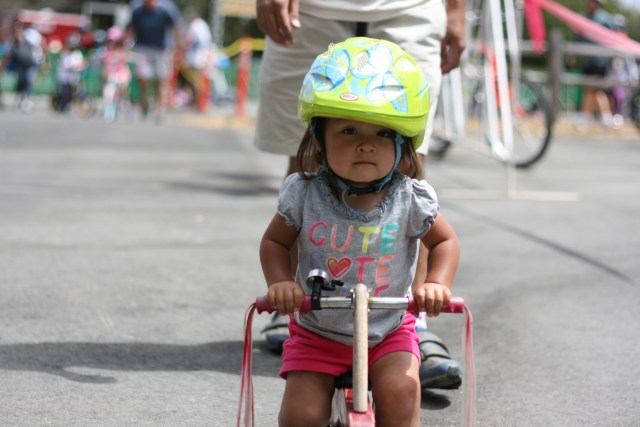The joy of seeing your kid riding his or her bike independently presents a perfect milestone moment, right alongside first steps, first words, etc. Especially if you’re a cycling enthusiast yourself, this is an opportunity to make cycling a part of family quality time. Not to mention, kids feel proud and empowered when they start riding their first “big kid” bikes, which is another reason why cycling helps kids grow and develop mentally as much as physically.
Hand Signals
First things first: hand signals have to be used when riding a bike, and if you think your child could lose their balance when signaling, then they’re not ready for an independent ride just yet. Hold them back a while, teach them all the proper signals first, and practice with them until they’re confident enough. Also, make sure to teach your child to think independently and always signal for themselves when they’re riding behind someone.
Facing Traffic
Another misconception we see all too often is parents believing their children will somehow be safer if they ride against traffic. Do not, under any circumstance, allow this to happen, let alone teach your child it’s the right thing to do. Riding against traffic confuses drivers and almost a quarter of bicycle-car collisions result from such instances. Teach your child to ride on the right side of the road, with traffic, and if they’re under 10 years of age, it’s best they stay on the sidewalk for good measure.
A Proper Bicycle
“Children grow like grass; it’s best to get my kid a bigger bike to grow into.” NO. Oversized bikes are dangerous, especially for somebody who is new to cycling and thus doesn’t have the coordination needed to control a bigger bike. This is not something to overlook, and it doesn’t have to present a hefty expenditure; you can always find kids bikes for sale at reasonable prices and resell or trade your children’s outgrown bikes. Plus, it’s not like you’ll be changing bikes all the time, considering you can adjust the seat height as your child grows.
The Helmet Conundrum
Thinking that short rides around the neighborhood don’t require a helmet is a very common mistake that parents make. There’s some debate about when the helmet must be worn, when in fact there should be none at all—your child must wear a properly fit helmet at all times when riding a bike, no matter how short the ride. It prevents from serious injury in case of a fall, and believe it or not, the majority of bike accidents happen near home when children are least alert.
Riding at Night
You might think it’s perfectly safe for your child to ride at dusk or night time if they’re equipped with reflectors and a reflective vest, but that’s not really the case when it comes to fresh cyclists. Never allow your child to ride in the dark because even with all the proper equipment, this requires additional vigilance that comes with age and experience with cycling. Also, have your child wear bright clothing when riding their bike, as a safety measure.
Lastly, it’s important to establish ground rules: only one person may ride a bike at a time, both hands must be kept on the handlebars, no headphones whatsoever, wear sturdy, closed-toe shoes when cycling and of course, always follow the basic rules of traffic. Most importantly, set an example for your children and they will find it much easier to follow.
Cycling is one of the most fun exercises possible and an incredible way for kids to spend the whole day outdoors, so teach them how to approach it properly at an early age and they’ll have a hobby for life. Organise family rides that demonstrate safety and hands-on activities that teach them bike maintenance—these are all great ways to nurture their enthusiasm!











